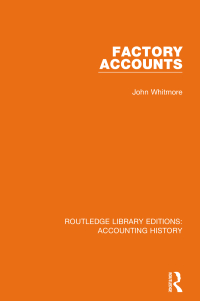Question
1. The Big Sister Company is in a seasonal business and prepares quarterly budgets. Its fiscal year runs from January 1 through December 31. Production
1. The Big Sister Company is in a seasonal business and prepares quarterly budgets. Its fiscal year runs from January 1 through December 31. Production occurs only in the first quarter (January to March), but sales take place throughout the year. The sales forecast for the coming year shows the following:
| First quarter | $477,000 | Third quarter | $477,000 | |||
| Second quarter | 288,000 | Fourth quarter | 477,000 |
There are no cash sales, and the beginning balance of receivables is expected to be collected in the first quarter. Subsequent collections are two-thirds in the quarter when sales take place and one-third in the following quarter. The company makes materials purchases valued at $402,000 in the first quarter, but makes no purchases in the last three quarters. It makes payment when it purchases the materials. Direct labour of $347,000 is incurred and paid only in the first quarter. Factory overhead of $338,000 is also incurred and paid in the first quarter, and is at a standby level of $99,000during the other three quarters. Selling and administrative expenses of $35,000 are paid each quarter throughout the year. Big Sister has an operating line of credit with its bank at an interest rate of 5% per annum. The company plans to keep a cash balance of at least $10,000 at all times, and it will borrow and repay in multiples of $5,000. It makes all borrowings at the beginning of a quarter, and makes all payments at the end of a quarter. It pays interest only on the portion of the loan that it repays in a quarter. The company plans to purchase equipment in the second and fourth quarters for $69,000 and $150,000, respectively. The cash balance on January 1 is $26,000 and accounts receivable total $151,000. Prepare a cash budget for the year. Show receipts, disbursements, the ending cash balance before borrowing, the amounts borrowed and repaid, interest payments, and the ending cash balance. (Round answers to the nearest whole dollar, e.g. 5,275.)
2. Lyon Factory Ltd. manufactures two products: chairs and stools. Each chair requires 3 m of upholstery and 4 kg of steel. Each stool requires 2 m of upholstery and 5 kg of steel. Upholstery costs $2 per metre and steel costs $5 per kilogram. Lyon Factory expects inventories at January 1, 2020, to be as follows:
| Chairs | Stools | Upholstery | Steel | |||
| 26 units | 15 units | 75 m | 150 kg |
Inventories of raw materials should not be allowed to fall below the amounts given as at January 1, 2020. Inventories of finished furniture at the beginning of each month should be enough to cover 25% of the anticipated sales for that month. Upholstery is ordered in units of 100 m and steel in units of 50 kg. Half of the materials purchased are paid for in the month of purchase and the other half in the following month. The sales budget for the first three months of the year 2020 is as follows:
| January | February | March | |||||||
| Chairs | 104 | units | 132 | units | 88 | units | |||
| Stools | 60 | units | 72 | units | 60 | units | |||
Calculate the cash disbursements in February for purchases of steel.
Steel requirements for January and February
Quantity of purchases in January and February
Cost of purchases in January and February Cash disbursements for February
Step by Step Solution
There are 3 Steps involved in it
Step: 1

Get Instant Access to Expert-Tailored Solutions
See step-by-step solutions with expert insights and AI powered tools for academic success
Step: 2

Step: 3

Ace Your Homework with AI
Get the answers you need in no time with our AI-driven, step-by-step assistance
Get Started


